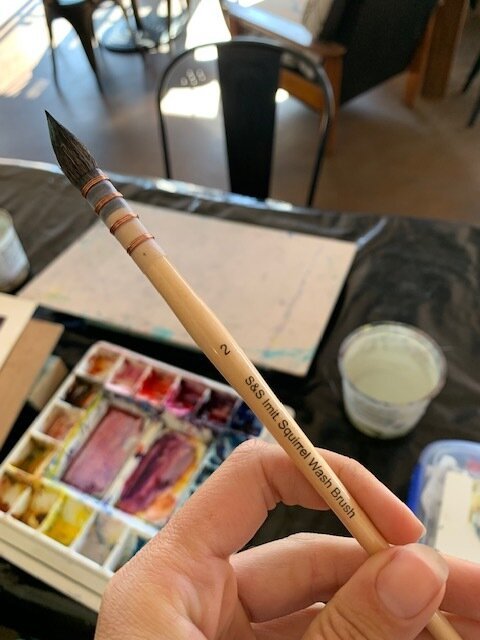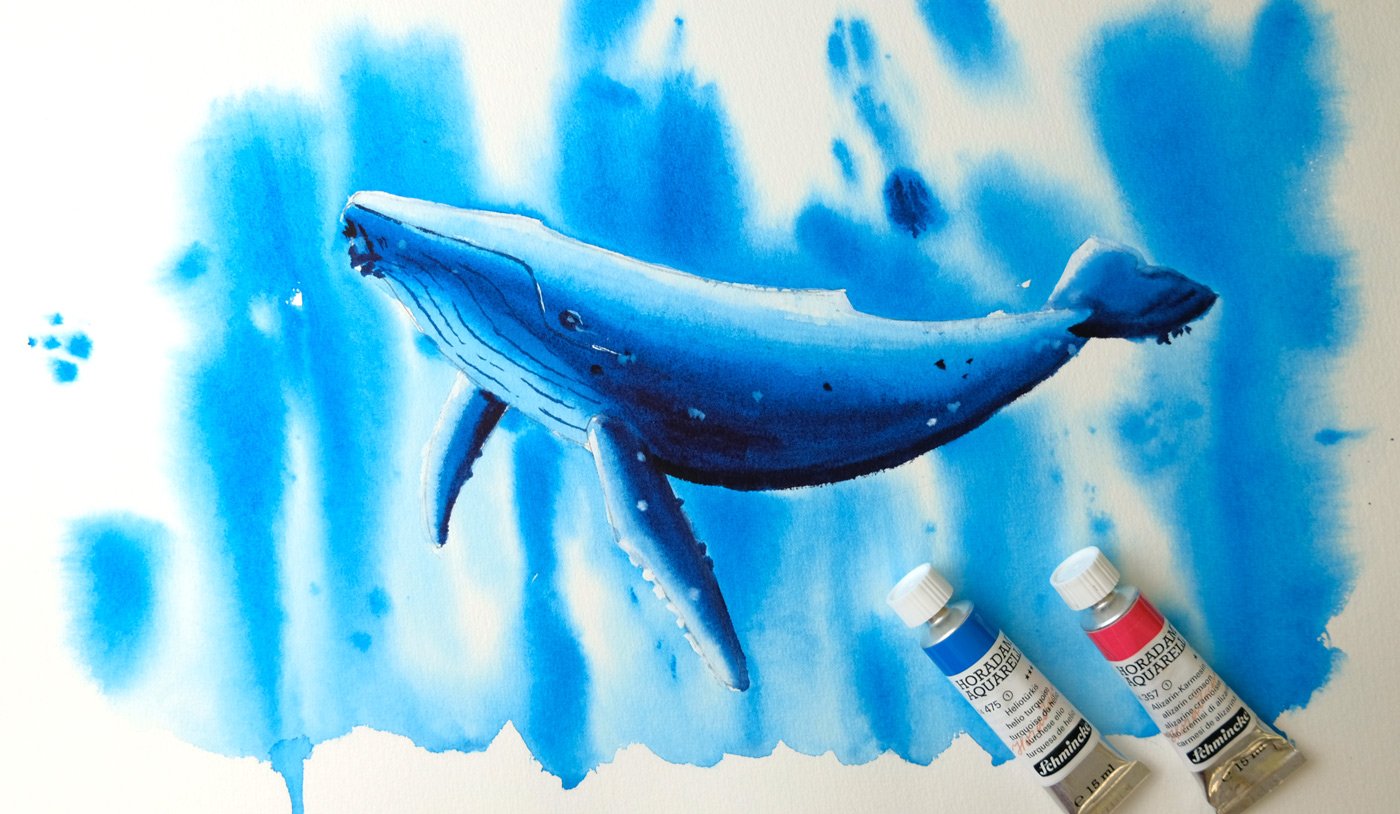What watercolour brushes should I buy?
So….you’ve enrolled in a watercolour class or you’ve purchased my online watercolour course and you’re ready to learn to paint! I’m so excited for you! Watercolour is without a doubt, the BEST medium and it’s actually quite easy to use…unless of course you’re using the wrong brush.
I’ve used watercolour professionally and taught watercolour classes for close to 10 years now so I’ve seen plenty of new watercolorists discouraged because they think that they’re no good. In reality, I’d say 9 times out of 10 their watercolours aren’t working because they’re using the wrong paper and the wrong brush. So let me explain which brush you should use for watercolour and why:
Use natural hair watercolour brushes.
There’s a huge different between natural bristles and synthetic bristled brushes. The picture below is a comparison of a natural hair brush (sable) and a synthetic hair brush under a microscope. See all of those little funny shapes on the natural hair? They are like little reservoirs that hold water. Put 50 of those hairs together to form a brush and that brush is going to hold a lot of water. And watercolour, being a water-based medium, needs lots of water. So if you’re using a synthetic bristle brush, it just won’t hold enough water to work wet-on-wet (painting while the paper is still wet). The paper will dry before you finish the area you’re working on. Sure synthetic brushes can still be used for light work, smaller areas or fine detail. But you’re missing out on the real fun side of watercolour: working wet on wet!
Of course, sometimes a synthetic hair brush is just what we need. I’ll happily use a taklon-hair flat brush when I want to make straight-edged shapes (like windows or the straight lines in my artwork below). I even include a synthetic “rigger brush” in my recommended student’s brush kit and I often use a humble toothbrush in my work! These are all useful brushes when particular shapes or details are required. But for the majority of your watercolour painting, you’ll need a large, natural-haired brush made from squirrel, sable or goat hair (or a vegan imitation squirrel hair alternatives - more on that below).
There is one exception to my rule though, and that’s when it comes to my watercolour classes for kids. I find that kids are generally working on a cheaper brand of watercolour paper and these just can’t handle too much water. So when that’s the case, I recommend sticking with a synthetic hair brush until the student is ready to upgrade to good quality paper.
Some of the interesting, hard-edged shaped marks in this painting were created with the synthetic “flat” brushes shown.
Learn more about watercolour in my FREE watercolour masterclass
You do have the budget for natural hair watercolour brushes.
Traditionally squirrel or sable hair brushes (made from Siberian weasel) are used for watercolour as they are incredibly soft, hold a lot of water but still form a nice point. However not everyone has the budget for a squirrel/sable hair brush ($40-$150) and they can be really hard to find these days! Though “red sable” brushes are slightly cheaper in the natural hair range (they just don’t hold their point as well and I don’t like them much anyway).
But here’s something I discovered recently while looking for cheaper brush alternatives for my students: goat hair works fine! Goat hair is a cheaper alternative to squirrel and sable hair brushes. Sure they’re not as soft as squirrel/sable and they do tend to hold onto the pigment a little more but when it comes to price, I find the cheap goat hair brushes perfectly acceptable. I use them in my watercolour classes all the time and sell them in my student brush kit. They are usually coated in a starch to keep them pointy during manufacturing but once you rinse that off they’ll be soft and flexible. They do shed some bristles here and there but hey, for the price I’m happy to pick a few hairs off my paintings!
Buy quality watercolour brushes and stick to them.
Don’t be fooled into buying cheaper synthetic brushes at first and thinking “i’ll upgrade my brushes as I get better at painting.” As I mentioned, different brushes hold water differently and you’ll get used to your brush working a certain way. However, when you switch brushes, you’ll go through a period of your paintings “not working” because you're not used to the absorbency of your new brush. You’ll start working too wet, or too dry. Cauliflower shaped watermarks will appear out of nowhere and you’ll end up ripping up your paper, storming off and being grumpy for the rest of the day. I’ve seen many students throw away top-of-the-line expensive brushes and go back to their cheap brushes for this very reason. Don’t make that mistake!
Some of the interesting, hard-edged shaped marks in this painting were created with the synthetic “flat” brushes shown.
Don’t be sold a lie.
Recently, I’ve noticed students coming to class with “imitation sable/squirrel” hair brushes. These are synthetic hair. The bristles are dyed to look like a natural hair but they still have that shiny and bouncy, synthetic bristle feel. Sometimes they will be labeled as “sabeline,” “sablinsky” or “imit. sable” on the brush. Some of these are absolute rubbish, but some are actually great! I was gifted the imitation squirrel brush (below) from Yellow Brick Studio in Murwillumbah and loved it! Just make sure you vigorously rinse these out for a good 10 seconds before using it, to get rid of any starch/soap residue used to hold the hairs together during manufacturing and transport.
Imitation Squirrel hair brush
There’s a few dodgy ones around but these S&S ones are great! They look and feel like my Raphail 803 squirrel hair mops but for half the price and vegan friendly.
Look after your brushes!
Hopefully by now I’ve convinced you to invest in some good quality brushes. But how can you get the most out of your investment? By knowing how to use your watercolour brush and how to look after it! If you’re finding that you just can’t seem to keep the fine tip while using your new brushes, I’m currently working on my guide for using a watercolour brush correctly. I’m also written a guide on how to care for your watercolour brushes so that they last for years to come. They’ll be up on the blog soon.
Anne x





